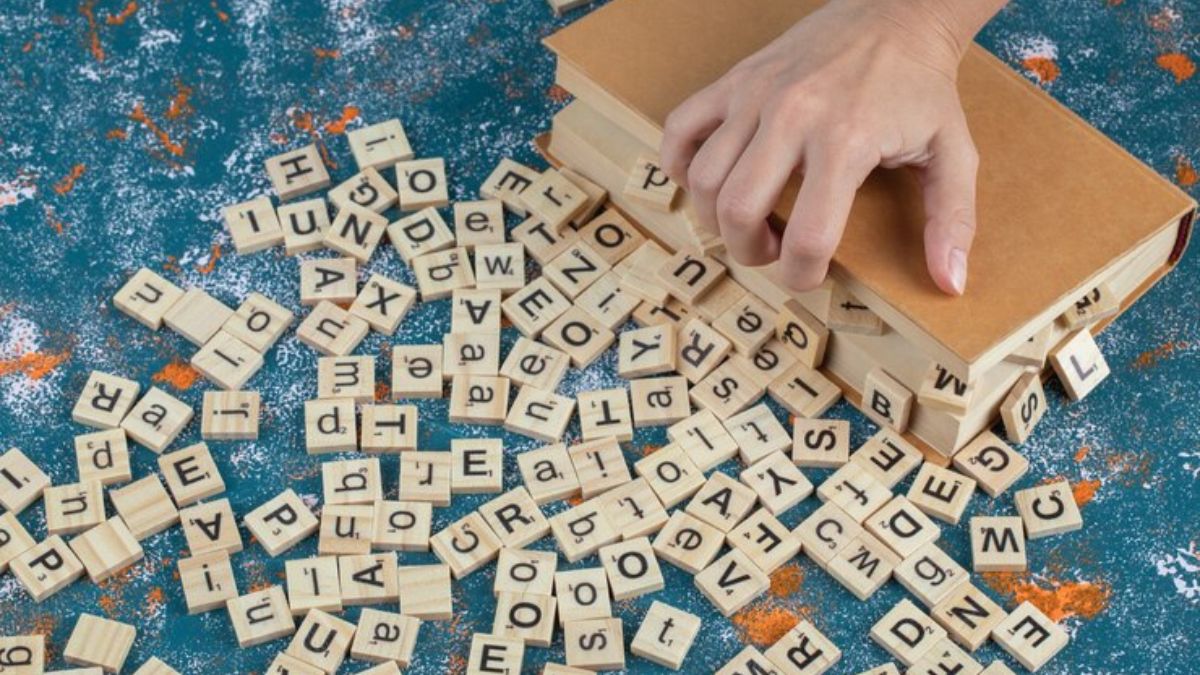Games
Game Names: Crafting the Perfect Identity for Your Game

There are many choices to be made while making a video game, but the name of the game is frequently disregarded despite its importance. It establishes the mood for the whole experience and is the first thing that prospective gamers will notice. Picking the right name for your game is crucial; if you develop a bad one, people will forget about it. Choosing the right name for a game is no easy task.
Types of Game Names
Single Word Names
Names that consist of just one word are direct and powerful. Games such as “Fortnite” and “Minecraft” serve as excellent illustrations. These game names are memorable and powerful for brands.
Compound Names
A distinctive and descriptive compound name is created by combining two or more words. In this regard, consider “Grand Theft Auto” and “World of Warcraft.” You can usually tell more about the game’s mechanics from these titles.
Descriptive Names
Names that are descriptive may tell you a lot about the game’s style and substance. For instance, “Call of Duty” and “The Legend of Zelda” are excellent examples. Their purpose is to entice gamers who have a particular interest in a certain environment or style of gaming.
Abstract Names
Names that are abstract are more imaginative and indirect. Though more work goes into branding them, they have the potential to stand out. “Halo” and “Overwatch” are two examples of abstract titles that players learn to associate with the game’s plot and mechanics.
How to Brainstorm Game Names
Understanding Your Game’s Theme
Get a good grasp of the game’s theme first. Do you think it’s more of a puzzle game, a science fiction shooter, or a fantastical adventure? Your brainstorming session will be guided by the topic.
Identifying the Target Audience
Think about the people who will be handling your game. Are we talking about children, teens, adults, or a combination of the three? Your game’s tone and style might be impacted by your target audience’s knowledge.
Using Creative Techniques
Make use of language mixing, mind mapping, and free writing as creative tools. New ideas may be sparked by exploring other businesses or even employing random word generators.
Considering Cultural Sensitivity
Make sure your game’s name doesn’t mislead or insult anybody. To minimize negative associations, it is advisable to research the meanings in many languages and cultures.
Elements of a Good Game Name
Memorability
A good game name should stick in the player’s mind. It should be easy to recall, spell, and search for online.
Pronounceability
Your game name should be easy to say. Complicated or awkward names can be a turn-off.
Uniqueness
Stand out from the crowd. Make sure your game name isn’t easily confused with another game, product, or brand.
Relevance
Your game name should reflect the essence of your game and give potential players an idea of what to expect.
Common Mistakes to Avoid
Overcomplication
Don’t overthink it. A name that’s too complex can be hard to remember and market.
Lack of Research
Always check if the name is already in use. A quick search can save a lot of trouble down the line.
Ignoring SEO
SEO is crucial for discoverability. Ensure your name includes keywords players might search for.
Cultural Missteps
Avoid names that might be culturally insensitive or have unintended negative meanings in other languages.
Case Studies of Popular Game Names
Fortnite
Initially thought to be derived from “Fortnight,” it evolved into “Fortnite,” blending the idea of survival with a unique twist.
Among Us
This name perfectly captures the game’s core concept of finding the impostor among the crew. Simple yet descriptive.
Minecraft
Combining “mine” (as in mining) and “craft” (as in crafting), this name beautifully encapsulates the game’s primary mechanics.
The Legend of Zelda
This name evokes a sense of epic storytelling and adventure, appealing to fans of fantasy and exploration.
Tools and Resources for Naming Games
Online Name Generators
These tools can provide a plethora of suggestions and help spark ideas when you’re stuck.
Thesauruses and Dictionaries
These are excellent for finding synonyms or related words that fit your game’s theme.
Brainstorming Apps
Apps like MindMeister or Evernote can help organize your thoughts and track name ideas.
Creative Communities
Forums and social media groups can offer feedback and suggestions from fellow gamers and developers.
Testing Your Game Name
Feedback from Friends and Family
Get initial impressions from people you trust. They can provide honest and helpful feedback.
Polls and Surveys
Use tools like Google Forms or SurveyMonkey to gather broader opinions on potential names.
Social Media Feedback
Platforms like Twitter and Reddit are great for gauging public reaction.
A/B Testing
If you have a few top contenders, try A/B testing them in different contexts to see which one resonates more.
SEO Considerations for Game Names
Keyword Integration
Incorporate relevant keywords to improve searchability. Think about what terms players might use to find a game like yours.
Search Engine Visibility
Ensure your game names appears in search engines by optimizing your website and game description.
Competitive Analysis
Check out the game names of similar games and see what works. Learn from your competitors’ successes and mistakes.
Legal Considerations
Trademark Searches
Make sure your game names isn’t trademarked by someone else to avoid legal issues.
Domain Availability
Check if the domain name is available for your game. A matching website can be crucial for marketing.
Copyright Issues
Ensure that your game names doesn’t infringe on existing copyrights, which can lead to costly disputes.
Branding Your Game Name
Logo Design
A strong logo can make your game names more memorable and visually appealing.
Marketing Materials
Consistent use of your game names across all marketing materials helps build brand recognition.
Consistency Across Platforms
Use the same name and branding across all platforms to avoid confusion and build a strong brand identity.
Localization of Game Names
Adapting to Different Languages
Translate your game names appropriately for different regions to ensure it retains its meaning and appeal.
Cultural Relevance
Make sure the name is culturally appropriate and resonates with local audiences.
Avoiding Misinterpretations
Carefully research translations to avoid names that might be misinterpreted in different languages.
Evolving Your Game Name
Rebranding Strategies
If your initial name isn’t working, don’t be afraid to rebrand. Plan and execute carefully to retain your audience.
Handling Public Reaction
Be transparent with your community about why you’re changing the name and involve them in the process if possible.
Maintaining Player Loyalty
Rebranding can be tricky, but with the right approach, you can maintain and even boost player loyalty.
Conclusion
It takes imagination, investigation, and planning to come up with the ideal name for a game. It’s more than just a label; it’s an integral aspect of your game’s branding and promotional plan. By adhering to these rules, you may create a memorable name for your game that will attract players, make it memorable in the marketplace, and ensure your game’s success.
FAQs
How long should a game name be?
Ideally, a game name should be short and easy to remember. Around 1-3 words is often best.
Can I change my game name after release?
Yes, but it’s best to avoid it if possible. Rebranding can confuse your audience and disrupt your marketing efforts.
What if my game name is already taken?
You’ll need to come up with an alternative. Ensure thorough research and possibly consult a legal expert to avoid conflicts.
How important is the game name for SEO?
Very important. A well-chosen name with relevant keywords can significantly improve your game’s visibility online.
Should I hire a professional to name my game?
If you’re struggling, it might be worth considering. A professional can bring expertise and fresh perspectives to the process.
Sports-Gaming
Post Touchdown Attempt NYT: A Deep Dive into NFL and College Football Strategies

The joyous celebrations after a post touchdown attempt nyt are just the start. After the ball has crossed the goal line, the teams must make a crucial decision: whether to try a post touchdown a nyt kick. In the tense minutes leading up to a game’s conclusion, one decision may change the course of events. Any football fan worth their salt has to be familiar with the ins and outs of post-touchdown attempts in college and the NFL. What makes this section of the game so interesting? Let’s examine it in detail.
What is a Post touchdown attempt NYT?
A post touchdown attempt is the play following a touchdown where a team can score additional points. There are two primary options: kicking an extra point or attempting a two-point conversion. The choice depends on various factors, including the game situation, team strategy, and confidence in the execution of the play.
Rules and Regulations
NFL Rules
In the NFL, teams can kick an extra point from the 15-yard line, making it a 33-yard attempt. Alternatively, they can try a two-point conversion from the 2-yard line. These rules were adjusted in 2015 to add excitement and strategy to the game, making the extra point less of a guarantee.
College Football Rules
College football follows similar rules but with a slight variation. The extra point attempt is kicked from the 3-yard line, making it a 20-yard attempt, while the two-point conversion is also from the 3-yard line. This subtle difference influences strategic decisions differently than in the NFL.
Differences Between Leagues
The primary distinction lies in the positioning of the extra point attempt, which impacts the likelihood of success. NFL kickers face a more challenging task, which can lead to more frequent two-point attempts compared to college football.
The Significance of the post touchdown attempt nyt
The post touchdown attempt is crucial because it can determine the final outcome of a game. A successful extra point or two-point conversion can shift the momentum, create a decisive lead, or catch up to the opponent’s score.
Impact on Game Outcomes
A successful post touchdown attempt can be the difference between a win and a loss. In close games, every point counts, and the decision to kick or go for two can dramatically alter the game’s dynamics. Coaches must weigh the risks and benefits carefully.
Statistical Importance
Statistics show that the success rate for extra points is significantly higher than for two-point conversions. However, the two-point attempt, when successful, offers greater reward. Teams analyze these statistics to make informed decisions.
Strategies for Post Touchdown attemptNYT Attempts
When deciding on a post touchdown attempt, coaches often weigh the risks and rewards of kicking an extra point versus going for a two-point conversion. Kicking the extra point is generally safer and has a higher success rate, making it a common choice when the game is close or when the team wants to secure a sure point.
Kicking an Extra Point
The traditional choice, kicking an extra point, is often the safer bet. NFL kickers have a high success rate for these attempts, though the recent rule changes have slightly lowered this percentage.
Two-Point Conversion
A two-point conversion is a higher-risk, higher-reward option. Teams usually attempt this when they need to make up ground or put extra pressure on the opponent. It involves running or passing the ball into the end zone from the 2 or 3-yard line.
Situational Decision-Making
Coaches consider the game’s context, the score, and their team’s strengths and weaknesses when deciding on a post touchdown attempt nyt. Sometimes, analytics play a significant role, providing data-driven insights to support the decision.
Famous Post Touchdown Attempts in History
Memorable Moments
post touchdown attempt nyt attempts have provided some of football’s most memorable moments. Who can forget the dramatic two-point conversions that turned the tide in playoff games or even Super Bowls?
Game-Changing Attempts
Certain games are remembered for their decisive post touchdown attempt nyt attempts. These pivotal moments are etched in fans’ memories, often defining seasons or even careers.
Statistical Analysis
Statistical analysis of post touchdown attempt nyt attempts reveals that extra points in the NFL have a success rate of around 94-95%, while two-point conversions succeed approximately 48% of the time. This data informs coaching strategies, helping teams decide the best approach based on their likelihood of success.
Success Rates
Historically, the success rate for extra points hovers around 94-95% in the NFL, while two-point conversions succeed approximately 48% of the time. These statistics help inform strategic decisions.
Trends Over the Years
Over the years, there’s been a slight increase in two-point attempts, particularly as analytics become more integrated into football strategy. Coaches are more willing to take calculated risks based on statistical probabilities.
Technological Advances and Training
Equipment Improvements
Modern equipment, from kicking tees to footballs, has evolved, aiding in the precision of post touchdown attempts. Technology in training facilities also plays a role, allowing players to simulate game conditions accurately.
Training Techniques
Training methods have advanced, with players focusing on specific drills to enhance their performance during these crucial moments. Mental conditioning is also emphasized, preparing players to handle high-pressure situations.
Psychological Aspects
The psychological aspects of post touchdown attempt nyt are significant, as the pressure on players to perform can be immense.
Pressure on Players
The pressure on kickers and offensive players during post touchdown attempt nyt is immense. These plays can define a game’s outcome, placing significant mental stress on the individuals involved.
Mental Preparation
Teams employ sports psychologists and mental conditioning coaches to help players manage stress and perform under pressure. Visualization techniques and routine development are common practices.
Coaching Perspectives
Coaching Strategies
Coaches develop detailed strategies for post touchdown attempt nyt considering various game scenarios. These plans are often adjusted based on real-time game developments.
Decision-Making Processes
The decision to kick an extra point or go for two is a complex one, involving input from coaching staff, analytical teams, and sometimes even players. The process is dynamic and can change up until the last moment.
Fan Reactions and Cultural Impact
How Fans Perceive Post Touchdown Attempts
Fans often have strong opinions on whether to kick or go for two. These decisions can be hot topics of debate, especially when a game’s outcome hinges on them.
Cultural Significance
post touchdown attempt nyt are more than just plays; they are part of football’s cultural fabric. They embody the sport’s strategic depth and the emotional highs and lows that fans love.
Media Coverage
How Post Touchdown Attempts Are Covered
Media coverage of post touchdown attempt nyt highlights their importance. Analysts break down these decisions, providing insights into the strategies behind them.
Impact of Media on Public Perception
The media’s portrayal of post touchdown attempt nyt can influence public perception. Dramatic successes or failures are often magnified, shaping narratives around teams and players.
Future Trends
Potential Rule Changes
The rules governing post touchdown attempt nyt may continue to evolve. Discussions about further changes aim to balance fairness and excitement in the game.
Evolution of Strategies
As analytics and technology advance, so too will the strategies for post touchdown attempts. Future approaches will likely be even more data-driven and precise.
Conclusion
A crucial part of football that requires planning, talent, and mental toughness are post-touchdown efforts. They have the power to change the trajectory of games and make spectacular moments. The complexity of these efforts will increase as the game develops, guaranteeing that they will continue to be an interesting part of football.
Games
Unsuccessful Draft Pick: The Ultimate Mystery in the NYT Crossword Revealed

The New York Times (NYT) Crossword is a legendary representation of intellectual challenge and excellence in the world of crossword puzzles. The New York Times Crossword is an essential tool for both serious puzzlers and those who enjoy playing the game on a more casual basis. But the riddle of the bad draft selection is hidden within its grids, and solvers have been trying to decipher it for years.
An “unsuccessful draft pick” is a clue or answer that doesn’t meet the quality standards set by the editors of the crossword puzzle. These hints may not be specific enough to solve the problem or might be contradictory to the degree of difficulty or topic. In many cases, they annoy and confuse gamers by interfering with their gaming experience. By picking clues and solutions with care, editors aim to keep the puzzle’s integrity while making it more enjoyable and challenging for solvers. In order to provide fans with a top-notch crossword-solving experience, it is essential to find and fix bad draft selections.
Importance of Crossword Clues
When completing a crossword puzzle, crossword clues are essential. Players are challenged to use their brains and problem-solving abilities as they provide suggestions and help. The game becomes more interesting and fulfilling when well-crafted hints captivate solvers and increase excitement. The capacity of crossword clues to promote quick thinking, reasoning, and vocabulary expansion is what makes them so valuable. In order to complete the grid and get a feeling of achievement, players must follow the clues, which are like pieces of a jigsaw. Therefore, crossword clues are crucial, as they are the very heart and soul of crossword puzzles.
Significance of the New York Times Crossword
Unveiling the Ultimate Mystery
Analyzing Clues and Answers
When completing a crossword puzzle, it is essential to analyze the clues and the solutions. In order to solve the problem, solvers analyze each clue thoroughly, taking into account its length, language, and placement within the grid. They try to decipher the hidden meanings and tiny clues that could provide them with the solution. Two additional strategies that solvers frequently use are the use of cross-referencing clues and familiarity with typical crossword patterns and themes. Solvers need to be able to think critically and solve problems in order to analyze evidence and find the intended answer through several levels of ambiguity and deceit. If you want to become a master crossword solver, you need to have good clue- and answer-analysis skills.
Typical Characteristics of Unsuccessful Draft Picks
Inconsistency with the puzzle’s topic or difficulty level, vagueness, and lack of clarity are common characteristics of bad draft choices in crossword puzzles. It could be difficult for solvers to understand these hints since they aren’t always clear or precise. Unsuccessful draft choices could also include out-of-date vocabulary or cryptic references that make solving them more difficult. In the context of the problem, they often seem unnatural or forced, which disrupts the solver’s flow and causes dissatisfaction. In order to keep the crossword puzzle’s quality and integrity intact, it is vital for builders and editors to identify and prevent certain traits.
Behind the Scenes: Constructing the NYT Crossword
Role of Editors
Editors are vital in the crossword puzzle industry since they guarantee that published puzzles are accurate and of high quality. When reviewing constructor-submitted clues and answers, editors must check each element for correctness, clarity, and suitability. Additionally, they check the puzzle’s general structure and topic for consistency and coherence. In order to enhance the quality of the problem as a whole, editors may also provide constructors with comments and suggestions that they may use to improve their entries. Editors play a crucial role in ensuring that crossword puzzles in prestigious magazines like The New York Times continue to meet high standards and maintain their reputation.
Selection Process of Clues and Answers
To guarantee the quality and coherence of the crossword problem, the clues and solutions must be carefully and methodically selected. Editors carefully examine builder submissions, taking into account aspects like originality, elegance, and relevancy. To make sure the clues and answers are in line with the topic and degree of difficulty of the problem, they check them for clarity, correctness, and appropriateness. In order to confirm information and avoid duplication, editors may also use reference materials and databases. They also make an effort to provide clues that are both easy and difficult, so that players with different abilities may enjoy them. In order to provide readers with a fulfilling and entertaining puzzle-solving experience, the selection process is comprehensive and exacting.
The Legacy of Unsuccessful Draft Picks
Memorable Instances in NYT Crossword History
Impact on Solvers and Constructors
Conclusion
An enduring tradition, the New York Times Crossword continues to enthrall and test puzzle solvers all across the globe. The NYT Crossword’s dedication to quality, cultural significance, and long history have entertained and inspired generations of puzzle enthusiasts. The crossword puzzle is a masterpiece of human skill and imagination, from the witty clues to the painstakingly designed grids. The New York Times Crossword is still a popular activity that brings people together and challenges their brains, even if every now and then a draft selection or clue doesn’t work. No matter how much time passes, the NYT Crossword will always be a sign of intelligence, humor, and classic entertainment.
FAQ’s
How do NYT Crossword editors decide which clues and answers make the cut?
When choosing riddles and solutions to publish in the New York Times Crossword, editors take aspects like clarity, relevancy, and novelty into consideration. They strive to provide puzzle-solvers with a stimulating and entertaining experience.
Can unsuccessful draft pick be corrected in future editions of the puzzle?
In fact, you will be able to undo your poor draft choices in subsequent problem iterations. If editors or solvers find any problems, they may change the clues or change the solutions.
Are there any patterns or trends that indicate a clue may be an unsuccessful draft pick?
A bad draft choice might be a clue that is too general, doesn’t make sense in context, or doesn’t match the puzzle’s subject or difficulty level. Solvers may also mark a clue as failing if they provide negative feedback.
What role do reader feedback and solver suggestions play in shaping the NYT Crossword?
Reader comments and solution suggestions have a big impact on the New York Times crossword. After reviewing solver comments, editors make adjustments to future riddles based on what they learn.
Has there ever been a clue or answer that stumped even the most seasoned crossword solvers?
On occasion, a particularly challenging clue or solution has caught even the most seasoned crossword solvers off guard. The New York Times Crossword takes great delight in offering problems that test the mettle of solvers of all abilities.
Games
Crackstreams 2.0: Elevating Your Streaming Experience
-

 Fashion5 months ago
Fashion5 months agoEva_Fashionista: Redefining Style and Elegance in the Modern World
-

 Guide5 months ago
Guide5 months ago2131953663: Decoding the Mystery Behind the Numbers
-

 Sports Shirt3 months ago
Sports Shirt3 months agoÁo Bóng Đá Thiết Kế: Personalized Soccer Jerseys for the Discerning Fan
-

 Crypto3 months ago
Crypto3 months agoCrypticStreet.com Guides: Navigating the Path to Cryptocurrency Mastery
-

 Tech5 months ago
Tech5 months agoEmpowering Cybersecurity: The Evolution of Zero Trust Network Principles
-

 Travel5 months ago
Travel5 months agoEnhancing Your Travel Experience: Intelligent Budgeting for Unforgettable Journeys
-

 Crypto5 months ago
Crypto5 months agoCrypto bastion 25mshenbloomberg: A Dynamic Collaboration in the Cryptocurrency Sphere
-

 Guide5 months ago
Guide5 months agoUnderstanding jablw.rv: Enhancing SEO Strategies

